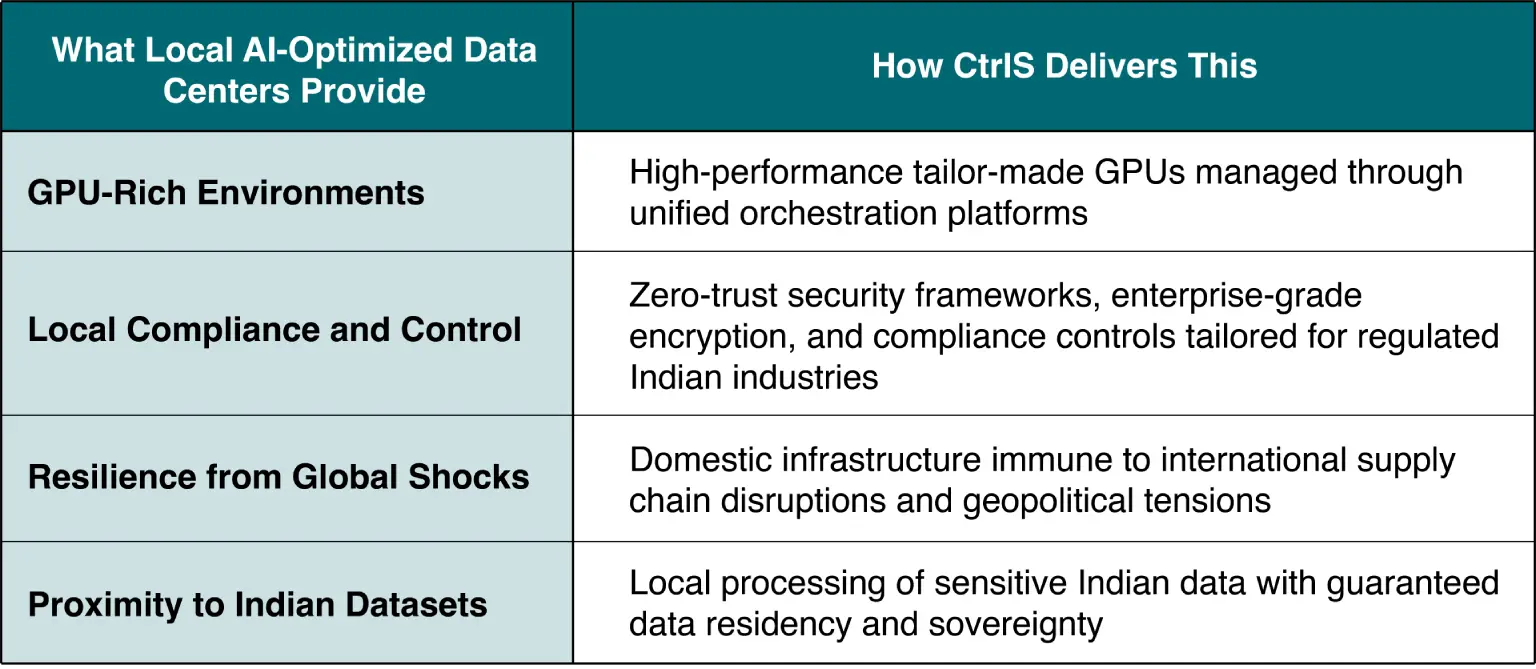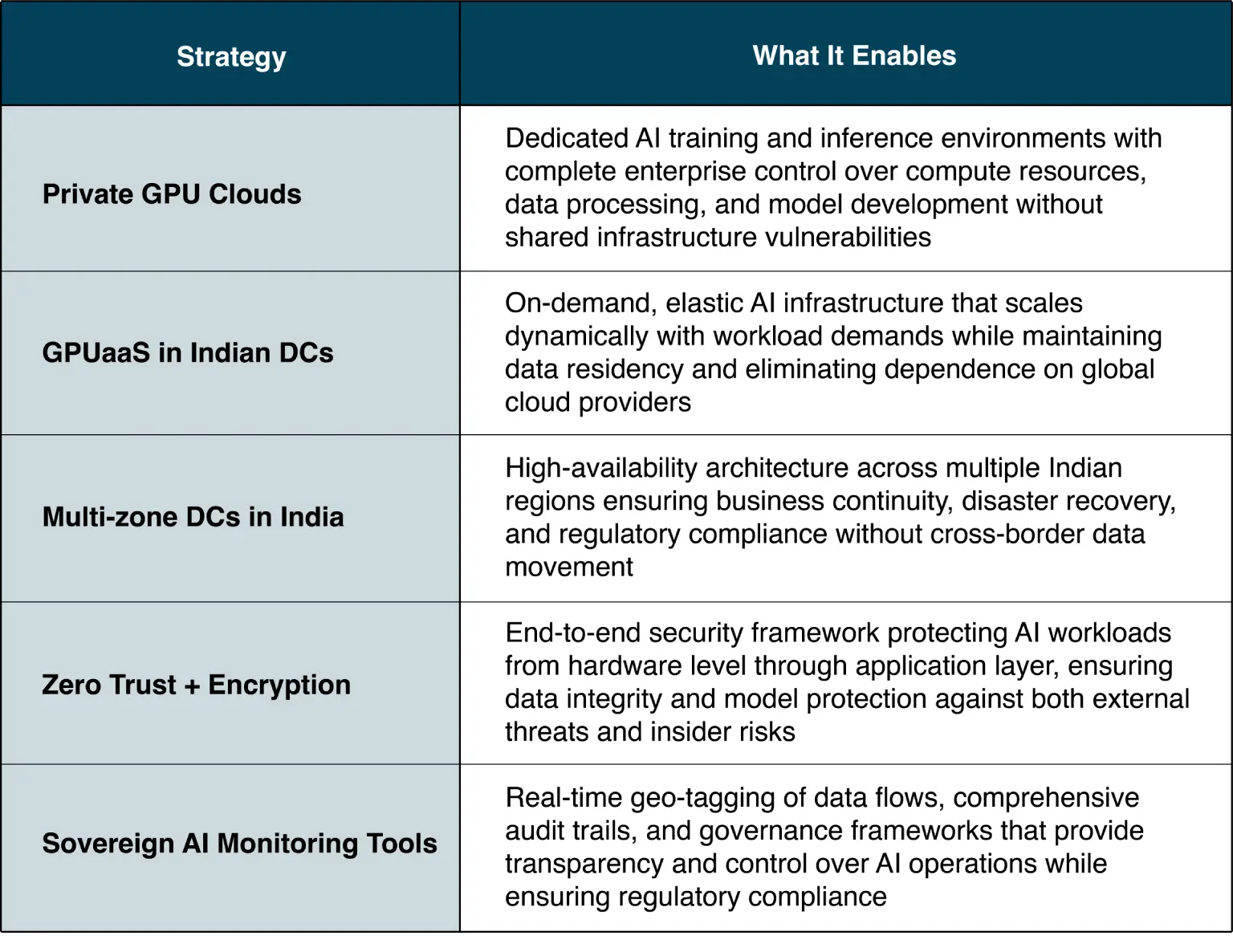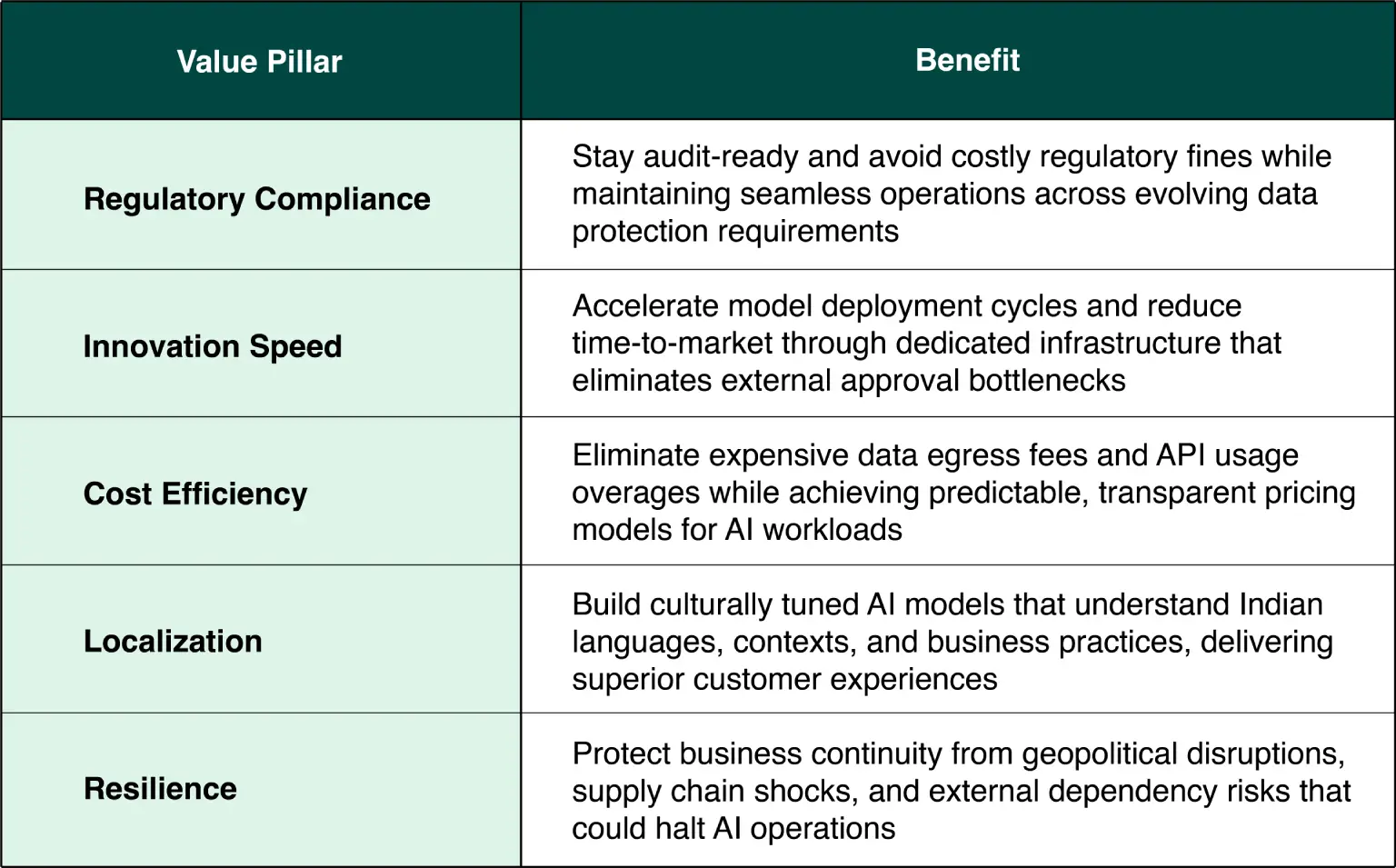As digital transformation accelerates globally, a critical question emerges: who controls the infrastructure, data, and algorithms powering enterprise innovation?
For India’s enterprises, this question has become urgent. AI spending in India will grow 2.2x faster than overall digital technology spending, generating an economic impact of over $115 billion by 2027. Yet, with increasing geopolitical tensions around export bans and hyperscaler lock-in, access to AI infrastructure is becoming dictated by external forces rather than business needs.
McKinsey’s Technology Trends 2025 report highlights how “countries and corporations have doubled down on sovereign infrastructure, localized chip fabrication, and funding technology initiatives” as strategic imperatives.
For Indian enterprises seeking to innovate securely, scale locally, and comply confidently, Sovereign AI acts as the solution. ItAI that’s built, deployed, and governed within national borders, ensuring strategic autonomy in an increasingly fragmented global technology landscape.
What Is Sovereign AI and Why Now
Sovereign AI means maintaining local control over four critical dimensions: models, infrastructure, data, and compliance. It’s the capability to develop, deploy, and govern AI systems entirely within national boundaries, free from external dependencies or restrictions.
India is aggressively pursuing this vision through unprecedented government initiatives. The IndiaAI Mission represents a ₹10,000+ crore investment spanning AI infrastructure, workforce skilling, and ethical frameworks. BharatGen aims to build foundational Indian LLMs that understand local languages and cultural contexts. AIRAWAT provides a national AI-specific supercomputing stack designed for sovereign development.
These initiatives signal that India views AI sovereignty not as an aspiration but as a national imperative for technological independence.
Why Data Centers Are the Bedrock of Sovereign AI
For nations to truly control their AI destiny, they must first control the physical and digital foundations that power AI development. This means moving beyond dependence on foreign cloud providers and establishing local, AI-optimized data centers that serve as national digital assets.
India’s AI ambitions cannot be realized through borrowed infrastructure. The country needs providers like CtrlS, whose GPU Private Clouds and GPUaaS offerings represent more than commercial services. They embody strategic national capabilities that ensure India’s AI development remains within its borders and under its control.

These capabilities make CtrlS’s infrastructure a cornerstone of India’s technological independence, ensuring that the nation’s AI revolution is built on sovereign foundations.
Global Shifts Making Sovereign AI a Strategic Necessity
The window for establishing AI sovereignty is rapidly closing. Four converging global trends are reshaping the AI ecosystem, making sovereign infrastructure essential for national competitiveness and security.
Chip Wars & GPU Nationalism
The Biden administration’s Framework for Artificial Intelligence Diffusion, finalized in January 2025, weaponized AI chip exports through a three-tier global system. Seventeen countries plus Taiwan enjoy unlimited access to advanced AI chips, while over 120 nations face strict quantity limits. Trump and Biden export bans demonstrate that AI hardware has become a geopolitical weapon, where access to cutting-edge GPUs determines a nation’s technological trajectory.
Hyperscaler Lock-in & API Gatekeeping
Despite leading in AI talent, India remains dangerously dependent on global hyperscalers
(AWS, Microsoft, and Google) for critical AI compute infrastructure. While the IndiaAI Mission targets 10,000+ GPUs domestically with empaneled bidders offering 14,517 GPUs, this pales against global hyperscaler capacity. Over 90% of LLM access remains controlled by fewer than five global entities, leaving India subject to the gatekeeping policies of major US tech giants who can restrict API access or foundational model availability at will.
Data Sovereignty Mandates
India’s DPDP Act permits data transfers only to government-notified “trusted” jurisdictions, creating uncertainty for MNCs relying on global cloud infrastructure. Sector-specific mandates from RBI and healthcare regulations demand in-country processing, while the government actively promotes sovereign cloud frameworks. These regulations force global AI companies to establish domestic hosting, making local infrastructure providers like CtrlS legally necessary.
In the next section, we’ll explore how Sovereign AI becomes India’s pathway to strategic advantage, transforming these challenges into opportunities for technological leadership.
Infrastructure Strategies That Enable Sovereign AI
Building sovereign AI requires a coordinated approach across multiple infrastructure layers. Rather than relying on isolated solutions, successful sovereign AI implementations integrate complementary strategies that reinforce each other’s strengths. The following infrastructure strategies form the technical foundation for AI sovereignty:

These strategies work in tandem to create a comprehensive sovereign AI ecosystem. Private GPU clouds provide the foundation, while GPUaaS delivers flexibility without compromising sovereignty.
Multi-zone redundancy ensures resilience, zero-trust security protects assets, and monitoring tools provide the visibility needed for governance.
Together, they enable India to build, deploy, and scale AI solutions that remain fully under national control while delivering world-class performance and reliability.
Business Value of Sovereign AI for Enterprises
For C-suite executives, sovereign AI is a strategic business imperative that directly impacts bottom-line performance and competitive positioning.
Enterprise leaders must evaluate AI infrastructure decisions through the lens of operational efficiency, regulatory risk mitigation, and sustainable competitive advantage.

Conclusion: Digital Sovereignty = Digital Survival
As global pressures on AI intensify through export controls, API restrictions, and geopolitical tensions, Indian businesses face a stark choice: build sovereign capabilities or remain vulnerable to external disruptions.
Organizations that embrace sovereign AI today position themselves to innovate freely without external constraints, comply confidently with evolving regulations, and scale responsibly within India’s growing digital ecosystem. The window for strategic advantage is closing rapidly as global AI competition escalates.
The future belongs to enterprises that control their AI destiny rather than depend on foreign gatekeepers for their competitive capabilities.
Curious about GPU-ready, sovereign AI infrastructure? Explore CtrlS AI Data Center Solutions.

Srini Reddy, Vice President & Head - Service Delivery, CtrlS Datacenters
With over 25 years of experience in the IT industry, Srini is a seasoned leader in cloud and IT infrastructure solutions. At CtrlS, he is responsible for the overall operations, and customer service delivery. Srini holds a strong track record of leading and managing cross-geography teams and partners, delivering key business and technology transformations. His extensive expertise spans program and project management, as well as IT service management, IT strategy, and quality management.

